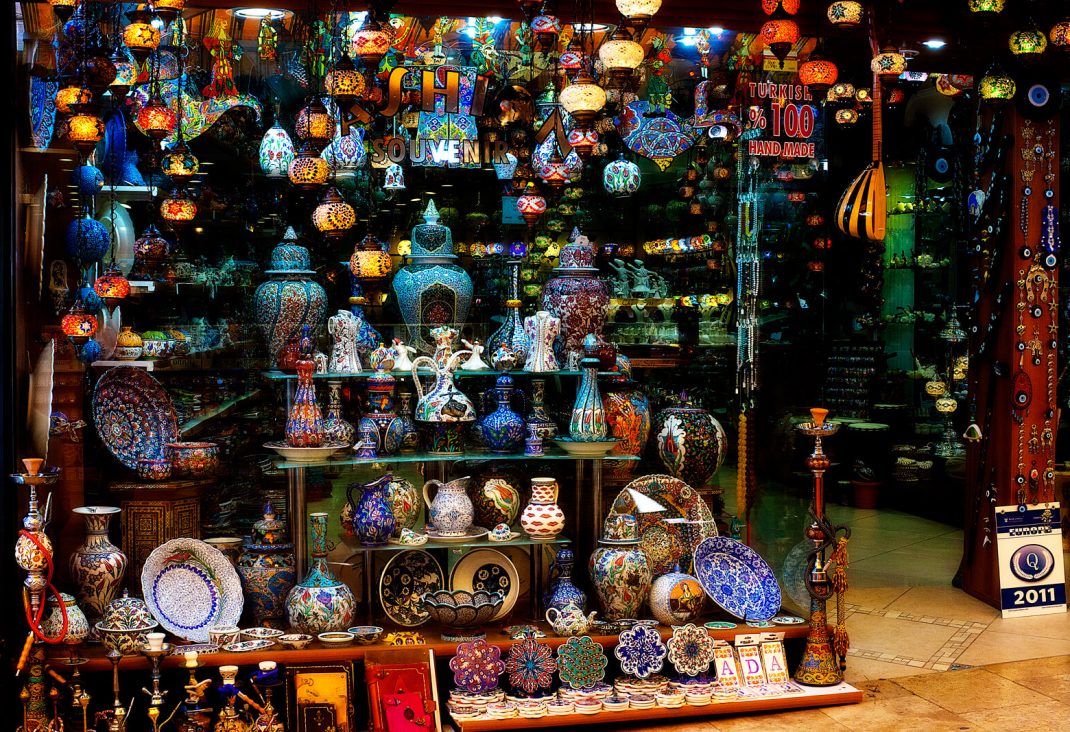VISUAL ARTS
THE GRECO-ROMAN HERITAGE
Turkey boasts two of the Seven Wonders of the Ancient World, the Temple of Artemis in Ephesus and the Mausoleum of Halicarnassus in Bodrum. Traces of these and other ruins from the Hellenistic and Roman periods (middle of 4th century BC to 3rd century AD) dot Turkey’s coast. While the Romans did introduce new architectural innovations the arch, the vault, the forum, and thermae (baths) they also borrowed heavily from their Greek predecessors, effectively ensuring artistic continuity between these two periods.
Ancient sites such as Ephesus, Miletus, Smyrna, and Pergamon illustrate the organization of Greek political and social life around the polis or city state. Temples dedicated to the city state’s patron deity marked the center of religious life, and where geography cooperated, as in Pergamon, these temples occupied the lughest point of the city, the acropolis. The agora (marketplace) was the center of commercial and political life in the polis. A large open space, the agora housed countless shops under the stoas (colonnades) lining its sides. In oligarchic and democratic city states, the open space of the agora, and the nearby bouleuterion (council house) functioned as the meeting places for the local government.
The surviving ruins also provide a glimpse into the culture of the period. A society that placed high value on athletics and the athlete, the Greeks built gymnasia for physical education and stadia for athletic competitions. They also celebrated the human form in the famous naturalistic sculpture scattered throughout, the city on pedestals and friezes. For entertainment, the residents of the polis attended musical performances in the odeon (theater) and theatrical performances in the ubiquitous, semi circular amphitheater. In the Hellenistic period, the auditorium of the amphitheater was built into the hillside, while the Romans used free-standing walls to support the weight of this structure.
THE TIMELESS VISION OF BYZANTIUM
The artistic achievements of Byzantine culture were developed within rigid theological parameters. First codified under the emperor Justinian (527-65 AD), stylized, abstract renderings were more important than naturalistic representation.
ARCHITECTURE
The fourth century, when the early Christians were finally afforded the right to establish their own places of worship, marks the emergence of the Byzantine church. Based on a longitudinal basilica plan, Byzantine churches feature a central nave oriented along an east-west axis. The entrance to the basilica is approached on the western side from a colonnaded outer courtyard. On the eastern side, at the other end of the nave, is the semi circular apse and the altar. Arched colonnades separate the nave from two parallel side aisles, and the wooden ceiling of the nave is raised above that of the side aisles to incorporate a series of clear windows admitting natural light to the central part of the building.
The most prominent symbol of Byzantine architecture is Istanbul’s Hagia Sophia (Aya Sofia), built between 532-37 on top of the remains of a church from the era of Constantine. The Aya Sofia features a domed roof centered over a square base, rather than the conventional octagonal kind. By the reign of Basil I (867-886), the domed basilicas of Justinian had evolved into a cross in square plan, featuring four vaulted arms of equal length extending from the domed center. Smaller domes occasionally replaced the vaulted roofs above the four anus of the cross, producing a five domed church known as the quincunx.
DECORATIVE ARTS
Byzantine artistry encompassed a variety of media, from illuminated manuscripts to carved ivory panels, embossed bronze doors and exquisite, jewel encrusted enamels. The dazzling mosaics and icons decorating Byzantine churches mark the pinnacle of Byzantine craftsmanship, and artists underwent years of spiritual and technical training before portraying sacred subjects. The stylization of Byzantine icons aimed to transmit not just represent the spiritual power of the subject.
Byzantine icons employed many different materials, including mosaic, enamel, ivory, gold, and wood. Mosaics were made of tesserae, small cubes of stone or ceramic covered in glass or metallic foil. The unique shimmering effect of Byzantine mosaics was achieved by setting gold and silver tesserae at sharp angles to enhance the reflection of light. Excellent examples of Byzantine mosaics can be seen in the Aya Sofia and the Kariye Camii.



Leave a Reply